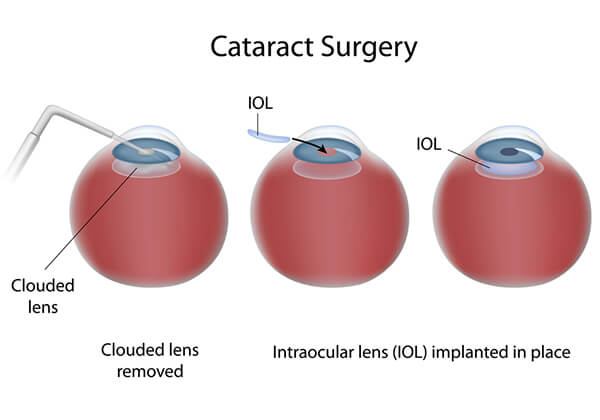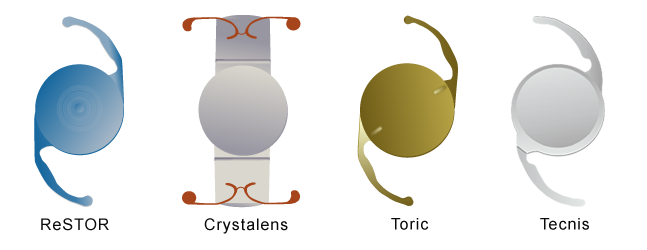Are you seeking cataract surgery in Maine?
The implantation procedure is the same for the different types of intraocular lenses (IOLs). The main difference between the IOLs is the type of vision they provide.
Using the state of the art methods and instrumentation, cataract surgery is typically performed using a small incision phacoemulsification technique. This means that the cataract surgery is accomplished using a very small incision, and removal of the lens material is accomplished using an ultrasonic needle.
An incision of 2.5 to 3 millimeters in length is then created at the junction of the cornea (the clear domed structure on the front of the eye) and the sclera (the white part of the eye).

Another dose of anesthetic is then administered inside the eye through this incision. The front part of the lens envelope, known as the lens capsule, is carefully opened so that the lens material can be removed. This is accomplished using a needle-like ultrasonic device, which pulverizes the hardened and yellowed lens proteins. The pulverized material is simultaneously vacuumed from the eye.
Once all of the cataract material has been removed, a folded intraocular lens is inserted through the original incision. The lens is then maneuvered into the lens capsule and centered. The lens will remain inside your eye in this location. Intraocular lenses cannot be felt or sensed in any way by the patient.
CHOOSING THE RIGHT LENS
Until recently, cataract surgery patients only received monofocal intraocular lens implants (IOLs) that had only a single power. This meant you had a choice of correction for either far or near vision and would most likely still need glasses. The FDA has recently approved several advanced lens implants for use by certified ophthalmologists. These advanced intraocular lenses can achieve focus at multiple distances, which may diminish your dependence on glasses or contacts after cataract surgery for near, far, and intermediate distances. If you have worn glasses, this might be an opportunity to see better without glasses. The main difference between the conventional and new IOLs is in the ability to focus at multiple distances.
Compared with monofocal IOLs, multifocal and accommodating lenses may reduce the need for glasses in activities like reading, or viewing text on a computer screen.

There are four advanced IOLs that Maine Eye surgeons are using. These are the ReSTOR lens, the Tecnis lens, Toric ReSTOR and the Crystalens. Each are unique and benefit each patient differently. Your surgeon will explain the differences and help you choose the intraocular lens that best fits your lifestyle needs.
